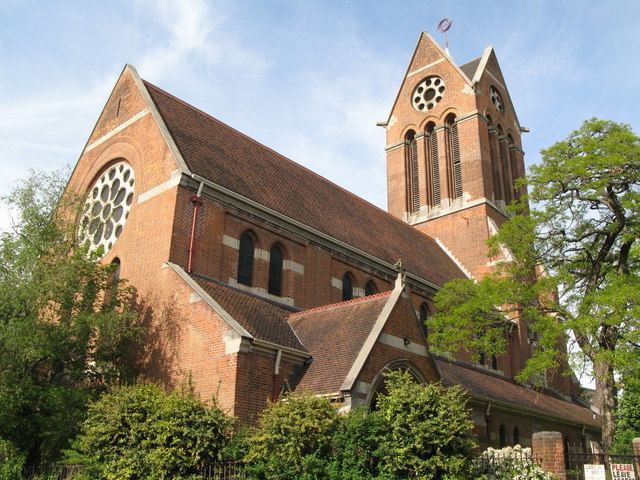OS grid reference TQ 295 850 Country England Opened 1869 | Location Kentish Town, London Denomination Anglican Founded 1867 Phone +44 20 7916 0050 | |
 | ||
Address Oseney Crescent, Kentish Town, London NW5 2AT, United Kingdom Similar St Paul's Church - Camden, St Michael's Church, St Mary's Church - Somers T, St Mary's Church - Hampstead, St George the Martyr - Holborn Profiles | ||
St Luke's Kentish Town (SLKT) Church is an active Church of England parish church in Kentish Town, North London. The building was recently reopened, having been a redundant Anglican church in the parish of Camden Town, London, under the care of the Churches Conservation Trust until 15 April 2011. At that time a pastoral measure was passed naming Revd Jonathan March as the new parish priest. Renovation work by HTB was completed in January 2012 and services have recommenced as of 29 January 2012
Contents
The church has been designated by English Heritage as a Grade II* listed building,
History
The construction in the 1860s of the Midland Railway's London terminus, St Pancras railway station, necessitated the demolition of a number of buildings on Euston Road, one of which was the recently erected St Luke's Church, designed by John Johnson and built in 1856-61 on the corner of Midland Road. The church was taken down and re-erected in 1866-7, with alterations by Johnson, as a Congregational church in Wanstead. The £12,500 compensation provided by the railway company and the £526 which purchased the building for Wanstead were used by the London congregation to build a new St Luke's in Oseney Crescent, Kentish Town.
Architecture
The new St Luke's was built in 1867-9 to the designs of the 25-year-old Basil Champneys. It was his first church and one of his first buildings. His father, William Weldon Champneys, who commissioned the church, was the vicar of the parish of St Pancras. John Johnson, who had expected to be the architect of the new church, was not pleased to be passed over.
Exterior
The exterior of the church is largely red brick with stone dressings, and the roof is tiled. The tower with its saddleback gabled roof is in the North German style, with three arcaded openings to the belfry and plate tracery above. The detail of the nave, chancel and aisles is Early English revival.
The nave has four bays with narrow aisles. The chancel is situated beneath the tower. It has a polygonal apse with plate tracery. The west end has three lancet windows, with a plate tracery rose window above. The aisles and clerestory have pointed windows in pairs.
Interior
The walls are of exposed red brick with two bands of stone. The nave arcades have low cylindrical pillars. Between the arches are shafts which support the principal roof timbers. The floor is paved with red and black tiles. From the crossing, there are three steps up to the brick-vaulted chancel and a further six steps up to the sanctuary, which has decorative tiles and sedilia. The reredos was added in the 1930s. The brass eagle lectern (1882) came from the war-damaged St Paul's Church, Camden Square, one of whose architects was John Johnson, designer of the original St Luke's. The Willis organ was installed in 1893.
The stained glass windows include:
